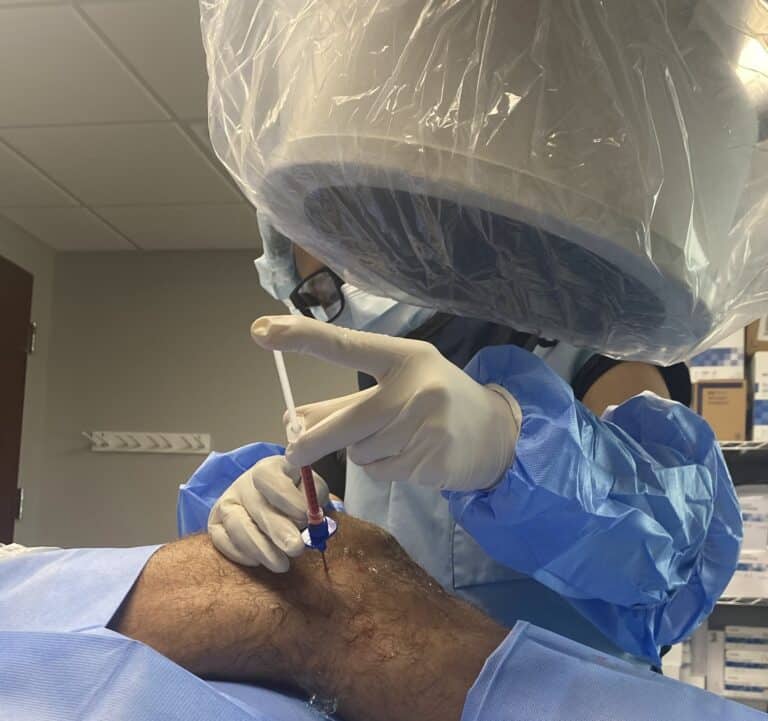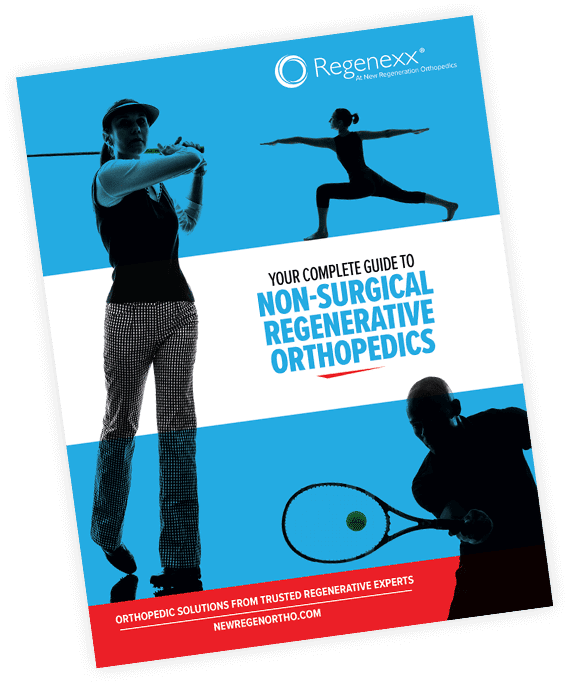An increasing number of clinics are specializing in Platelet Rich Plasma (PRP) regenerative procedures. PRP procedures involve taking several vials of a patient’s blood, and then processing it in a centrifuge to isolate a condensed amount of platelets in plasma from the whole blood. The PRP is then reinjected into the patient’s area of complaint.
The key with the PRP process is in the details of: how much blood is drawn, how the blood is processed, and how the PRP is reinjected. This article explains what to expect with the PRP process, and what sets high quality PRP best practices apart from the others. A few details discussed surrounding the quality of a PRP procedure are:
- Locations treated
- Use of imaging guidance
- Type of PRP
Another important measure of PRP efficacy to discuss is the dose or concentration of platelets in the PRP injectate. Read on to learn more on how to assess if you have received the proper dose of PRP for it to be effective for your injury.
What does PRP Dosage Mean?
PRP dosage is the concentration of platelets in the plasma after it has been processed as compared to the concentration of platelets in the original whole blood. When the blood is processed in the centrifuge, different machines have different potency and ability to concentrate the platelets. However, it’s difficult to know how concentrated your platelets are in any given procedure unless you’re told by the clinicians performing your procedure exactly what the PRP concentration is, or what kind of centrifuge they used. However, if you’ve received a PRP procedure and don’t know the dosage, one way to guesstimate the PRP concentration in a procedure is by the number of vials of blood taken.
Chirs Centeno, MD from the Centeno Schultz Clinic describes an easy way to understand approximate concentrations of PRP:

The math behind the table is also simple. You take the platelets in the volume of collected whole blood and then concentrate those down to your final volume. If there were 100% efficiency in collecting platelets, that would give you the final concentration. So 12 ml of whole blood concentrated down to 3 ml of PRP would be 4X or four times more concentrated platelets in the PRP than in the whole blood (2).
In short, Centeno suggests dividing the number of milliliters (ml) of whole blood taken by the number of milliliters used in the procedure to estimate the concentration of platelets in terms of the number of times the concentration in whole blood. So, the math for his example above is 12 ml whole blood divided by 3ml of PRP equals 4. So, the 3ml of PRP is 4X (or 4 times) the concentration of platelets in whole blood.
So now that we know how to estimate the PRP dosage from knowing the number of vials or ml drawn before processing, the next step is understanding what the appropriate dosage is for you.
How Does My Physician Know What PRP Dosage I Need?
One of the best predictors of your appropriate dosage of PRP is age. Studies show that older cells in older patients respond better to higher doses of PRP (3). Specifically, the concentrations of PRP per age range are as follows:

So, for older patients, more ml of blood should be extracted to yield a higher concentration. These values came from clinical data from Chris Centeno MD’s work spanning almost two decades (3). In this data, the responses of different-aged cells were measured in the environment of different concentrations of PRP. Young cells (under 35 years old) do a great job of responding to low dose PRP, whereas a maximal result for someone 50 years old+ was found to need higher doses.
The Takeaway: How Can You Tell if You Need Better PRP?
If you have received a PRP procedure and feel your outcome was underwhelming, the issue could have been in the PRP dosage. Since we know the appropriate doses are needed to maximize a patient’s response, perhaps go back and ask your treating physician what the PRP dosage was, or if they can’t tell you that, how many ml of blood were taken for the procedure. Then, with some simple math you can see if the PRP dosage was on target for your age group’s maximized response concentration. At Regenexx at New Regeneration Orthopedics of Florida (NROFL) our physicians always prescribe the PRP is processed with the patient’s appropriate dosage for their age. NROFL has clinics to serve you in our southwest Florida locations: Orlando, Tampa, St. Petersburg, and Sarasota. If you want to remove the guesswork regarding if your PRP procedure will set you up for your best outcomes, come see us.
References:
- https://newregenortho.com/what-to-expect-with-platelet-rich-plasma/
- https://regenexx.com/blog/are-you-getting-ripped-off-by-paying-for-a-low-dose-prp-shot/
- https://regenexx.com/blog/when-is-prp-not-prp/










